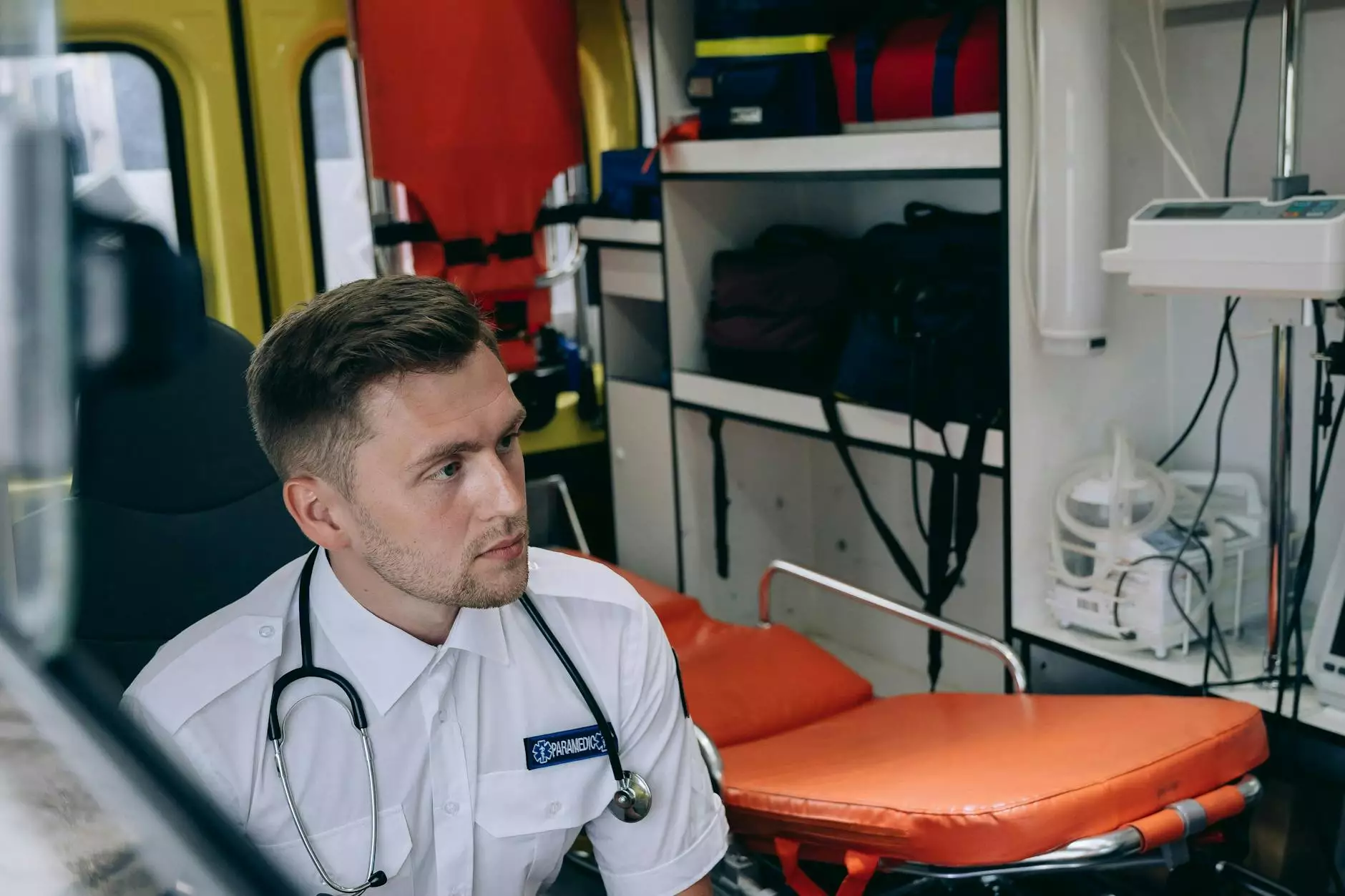Transforming Healthcare: The Role of Mobile Emergency Rooms

The healthcare industry has continually adapted to meet the demands of our society because quality medical care must be accessible and efficient. One of the most innovative solutions in recent years is the mobile emergency room. This article delves into what a mobile emergency room is, its benefits, and how it is changing the landscape of healthcare.
What is a Mobile Emergency Room?
A *mobile emergency room* is a facility that offers immediate medical care in a *transportable unit*. Equipped with advanced medical technology and staffed by skilled healthcare professionals, these units aim to provide urgent care, stabilization, and sometimes ongoing treatment, all at the location where the emergency occurs.
Key Features of Mobile Emergency Rooms
- Fully Equipped Medical Facilities: Mobile emergency rooms come equipped with medical equipment necessary for diagnostics and treatment such as diagnostic imaging, laboratory services, and surgical suites.
- Immediate Response: They can mobilize quickly during emergencies such as natural disasters, large-scale accidents, or in underserved areas with limited access to hospitals.
- Telemedicine Capabilities: Many mobile units are outfitted with telemedicine technology, allowing healthcare providers to consult with specialists in real-time, ensuring that patients receive the best possible care.
- Customizable Services: Depending on the needs of the community or the type of emergency, these facilities are often customizable to provide specific care, whether that's trauma care, pediatric services, or infectious disease management.
Why Mobile Emergency Rooms Matter
The importance of mobile emergency rooms extends beyond their immediate utility in crisis situations. They play a vital role in improving healthcare access and response time in several crucial ways:
Enhancing Access to Healthcare
In many regions, particularly in rural or underserved urban areas, access to immediate medical care is limited. Mobile emergency rooms help bridge this gap by delivering healthcare directly to those in need. This is vital in instances where traditional healthcare facilities may be difficult to reach due to geographical challenges, population density, or during times of crisis.
Rapid Response in Crisis Situations
During emergencies such as natural disasters (earthquakes, hurricanes, floods) or mass casualty incidents, the demand for emergency services can exceed the capacity of stationary facilities. *Mobile emergency rooms* can be deployed swiftly to provide care where it's most critically needed, stabilizing patients and preventing loss of life.
The Economic Impact of Mobile Emergency Rooms
While mobile emergency rooms provide undeniable medical benefits, they also carry significant economic advantages:
Cost-Effective Solutions
Establishing a stationary emergency room can be costly, with expenses related to construction, staffing, and equipment. Mobile units can serve multiple locations without the fixed costs of infrastructure. Their flexibility allows healthcare providers to allocate resources more effectively, ensuring that funds are spent on patient care rather than unutilized facilities.
Reducing Overcrowding in Hospitals
Many hospitals face overcrowding, leading to longer wait times and diminished patient care. By utilizing mobile emergency rooms, hospitals can divert non-critical patients away from their facilities, allowing better management of resources and space. This ultimately leads to improved outcomes for all patients, particularly those in need of immediate hospitalization.
Mobile Emergency Rooms in Action
To fully understand the transformative potential of *mobile emergency rooms*, it's helpful to explore real-life scenarios and deployments:
Case Study: Natural Disasters
In the aftermath of Hurricane Katrina, mobile emergency rooms were pivotal in delivering care to thousands displaced by the storm. Their rapid deployment allowed healthcare workers to reach affected areas and provide essential services such as trauma care, vaccinations, and primary care services. These units served not only as treatment facilities but also as community hubs for health education and resource distribution.
Addressing Public Health Crises
During public health emergencies, such as the COVID-19 pandemic, mobile emergency rooms became instrumental in testing and vaccination efforts. They provided accessible locations for mass immunizations and served as alternative treatment sites to relieve burdened hospitals, ensuring that healthcare systems could remain functional.
The Technology Behind Mobile Emergency Rooms
The effectiveness of *mobile emergency rooms* hinges on their integration of advanced technologies:
Innovative Medical Equipment
These mobile units utilize state-of-the-art medical equipment that enables quick diagnosis and efficient treatment. From portable ultrasound machines to advanced diagnostics labs, the technological capability ensures that medical staff can provide top-tier care on site.
Telehealth Integration
As telemedicine has grown in importance, so have mobile emergency rooms incorporated these advancements. Telehealth technologies facilitate remote consultations with specialists, ensuring that patients receive comprehensive care despite geographical barriers.
Challenges Facing Mobile Emergency Rooms
While mobile emergency rooms represent a major advancement in healthcare access, they do face certain challenges:
Regulatory Hurdles
Operating a mobile emergency room involves navigating complex regulations. Each state may have different laws impacting how these units operate, requiring comprehensive planning and compliance to ensure legal operation.
Public Perception and Acceptance
Building trust within communities that mobile emergency rooms are a viable alternative to traditional hospitals is crucial. Education and awareness programs are essential to inform the public about the services offered and their effectiveness.
The Future of Mobile Emergency Rooms
The future of *mobile emergency rooms* looks promising as healthcare continues to evolve. Here are some trends to watch:
Increased Adoption and Utilization
As more healthcare providers recognize the need for accessible emergency care, we can expect a rise in partnerships and utilization of mobile units. This includes collaborations with governmental agencies, NGOs, and private sectors to enhance community health.
Technological Advancements
Ongoing improvements in medical technology and telehealth capabilities will further enhance the effectiveness of mobile emergency rooms. Innovations such as AI-driven diagnostics and mobile health applications will likely become integral components of these units.
Conclusion: A New Era in Emergency Care
Mobile emergency rooms are reshaping health care by providing immediate care when it is needed most, proving they are not just a temporary solution but a vital part of our health care system. At ODU Lair, we are committed to integrating modern healthcare technologies and innovative services that cater to the ever-evolving demands of healthcare.
With the ability to deliver high-quality care directly to patients in need, mobile emergency rooms are a testament to our commitment to advancing public health and ensuring every individual has access to life-saving medical care.









